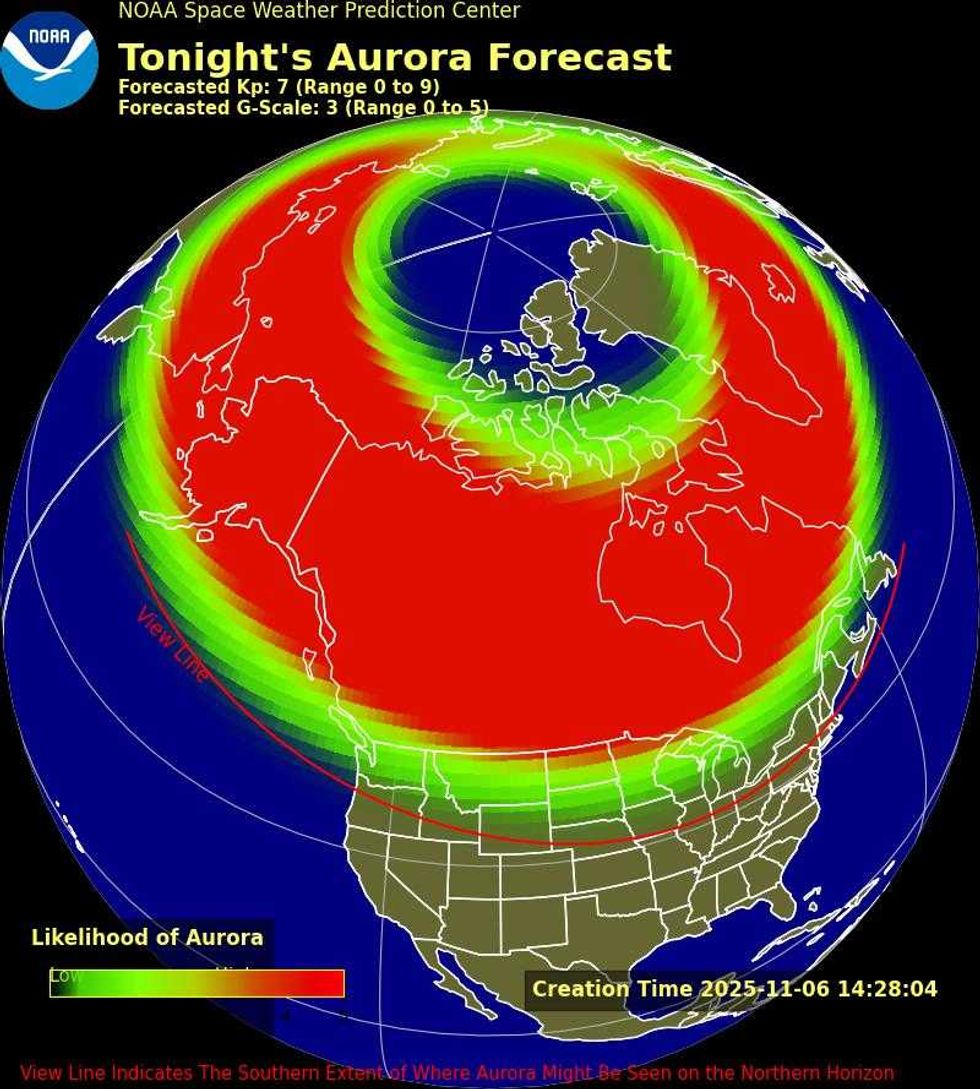Northern lights could be 'intense' in most of Canada tonight and visible across the country
You don't want to miss this! 👀

Northern lights in Toronto.
The northern lights are forecast to be "intense" across most of Canada tonight.
So, you could see the aurora from everywhere in the country, including Toronto and Vancouver!
A northern lights forecast from NOAA revealed that the aurora is expected to be "strong" and "active" as it plunges south.
That's because a strong geomagnetic storm is likely due to the arrival of multiple coronal mass ejections from the sun.
You could spot the aurora at night on Thursday, November 6 and into the early hours on Friday, November 7.
The "more intense" northern lights are expected in Kamloops, Bella Coola, Prince George, Calgary, Edmonton, Jasper, Banff, Lethbridge, Regina, Moose Jaw, Saskatoon, Winnipeg, Churchill, Thunder Bay, Moosonee, Timmins, Saguenay, Happy Valley-Goose Bay, and surrounding areas.
The aurora should be less intense but visible in Victoria, Vancouver, Kelowna, Sault Ste. Marie, Sudbury, Tobermory, Barrie, Ottawa, Montreal, and Quebec City.
NOAA's forecast also includes a view line, which shows how far south the aurora could be seen on the northern horizon.
Toronto, Windsor, Kingston, Moncton, Fredericton, Halifax, Charlottetown, St. John's, and nearby areas are within the view line tonight.
So, you could see the northern lights in those cities, but you have to look toward the northern horizon.

In NOAA's forecast map, the brightness and location of the aurora are shown as a green oval centred on Earth's magnetic pole.
The green oval is red on this map when the aurora is expected to be "more intense."
NOAA said the northern lights are visible directly overhead in places within the oval, but can be observed from 1,000 kilometres away when the aurora is bright.
Since the northern lights are expected to be "intense" tonight, you have a good chance of seeing the aurora in places that don't usually get it, like southern Ontario and the Maritimes.
There are aurora viewing tips from the Canadian Space Agency that can help you see the northern lights.
Typically, the northern lights appear a few hours after sunset and become more intense around midnight.
You need to find a place with little or no light pollution.
If a less intense aurora is forecast, the city lights can block your view.
When you're in a dark location, look all around because the northern lights can appear anywhere in the sky above you, according to the Canadian Space Agency.
But if you're in a place that's near the NOAA view line, the northern lights will be visible toward the northern horizon.
You don't need any special equipment, like a telescope, to see the northern lights.
This article's cover image was used for illustrative purposes only.
